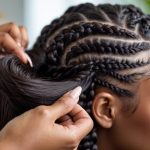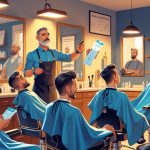
Long-Term Effects and Ongoing Research
It’s like this endless residue—permanent dye is supposed to just color your hair, but then you hear stylists complain about “buildup” and follicles that look like they’ve been through a sandstorm. Can anyone actually measure this? Dermatologist J. Evans told me, “Nobody counts environmental exposure. Maybe your split ends are from hard water, not ammonia.” But then, some people swear their hair gets dull only after using box dye. I’ve got a spreadsheet of people complaining about “color fatigue,” but who’s actually checking for EDTA or doing chelating washes? My colorist won’t shut up about it, but I never listen.
Emerging Studies and Future Outlook
The Yale study—honestly, it gave me a headache—linked long-term permanent dye use to higher risk of non-Hodgkin’s lymphoma, especially with black, red, or brown shades (so, basically everyone over 35?). Here’s the source. PubMed’s Nurses’ Health Study had over 100,000 women and still said “not enough evidence” for most cancer risks. (PubMed). Experts keep saying “inconclusive but concerning.” If I see “toluene-2,5-diamine” on a box, I’m tossing it and grabbing a tinted conditioner instead. Unless someone finally does a study that’s actually clear for once, I’m just going to keep guessing.
Frequently Asked Questions
Dry patches, frizz, weird accidental colors—these are the things people ask me about all the time, and honestly, I’m still googling half the answers. Every time a study comes out, stylists are texting each other: “Did you see this?!” Nobody wants to look like a fish-scale disco ball.
How can I prevent permanent hair dye from damaging my hair?
If you slap on permanent dye at home and skip strand tests, you’re basically begging for breakage. Most box kits have ammonia and peroxide, and if you don’t have a plan—bond builders, acidic rinses, avoiding hot tools—you’ll fry your hair, even with “gentle” formulas. Dermatologists like Dr. Lefkowitz keep saying weekly leave-ins with hydrolyzed wheat protein help, but most people don’t use enough conditioner.
Color every 3–4 weeks? Yeah, your ends will snap. Stagger with root sprays. If you skip daily conditioner, your hair will look dull, guaranteed.
What can I do if my hair starts to change color unexpectedly after dyeing?
You get this weird green tinge—maybe from a friend’s pool or a hotel with rusty water (Miami, looking at you). You grab a clarifying shampoo and end up stripping even more pigment. Sometimes, that just makes it worse.
What’s actually worked for me: color-safe toners (the purple or blue drops), and pro-grade copper removers. If the weird hue won’t budge, I use a color-deposit conditioner (the turquoise Overtone, not sponsored, just honest). Sometimes it’s the sun, not the dye, messing stuff up.
Is it normal for permanent hair dye to fade, and how can I maintain the color?
Permanent dye is not forever, no matter what the box says. Supposed to last 4–6 weeks, but honestly, by week two, you’re losing vibrancy—especially if you shower hot every day. Curly hair holds color longer; straight, fine hair loses it fast.
Skip heat protectant once, and your color is toast. There’s a trick: rinse with freezing water after coloring. I hate it, but it works. Or at least avoid sulfates.
What are the best practices to ensure my blonde hair doesn’t make me look washed out?
Every time I see someone’s new blonde fighting with their skin tone, I wonder why their stylist didn’t use a custom gloss or suggest a better lipstick. It’s all about undertones—peach, olive, blue? Guess wrong and you’ll look like a ghost. I actually asked a makeup artist at a runway show—she said, “Statement earrings. Distract everyone.” If your roots are showing, though, nothing saves you from that harsh line, not even a scarf.
Why might my hair be getting lighter on its own and what does it indicate?
Sometimes people think their blonde’s “lifting” from the dye, but it’s really just the sun or maybe meds. I’ve seen antibiotics do it—friend went sandy blond after six weeks on tetracycline, dermatologist blamed photosensitivity.
If your hair’s getting lighter and you didn’t plan it, check your vitamin D (seriously, a trichologist told me that). Or maybe you just changed your water filter, or swapped shampoos and forgot. I still forget to label bottles half the time.
Can permanent hair dye eventually revert to my natural hair color over time?
People keep asking if their roots are just going to magically sort themselves out after, like, a year. I mean, I wish. But nope. Once that dye molecule is crammed into your cortex, it’s not budging. It just sits there, lurking. Yeah, the color might fade a bit—kind of like a blurry old tattoo—but it’s not suddenly going to morph back to your original shade, especially with those oxidative dyes. Developer and pigment basically pry open your cuticle, and, well, good luck reversing that without help.
Bleaching? That’s a whole other mess. You zap out your natural pigment, and it’s just gone. Sometimes people get excited and think, “Oh, look, my natural color’s coming back!” Not really—it’s just your new hair growing in. Everything else? Stuck until you chop it off. Oh, and don’t even get me started on the whole “sunlight reverses dye” idea. Who started that? Sounds like wishful thinking (or maybe just denial).



